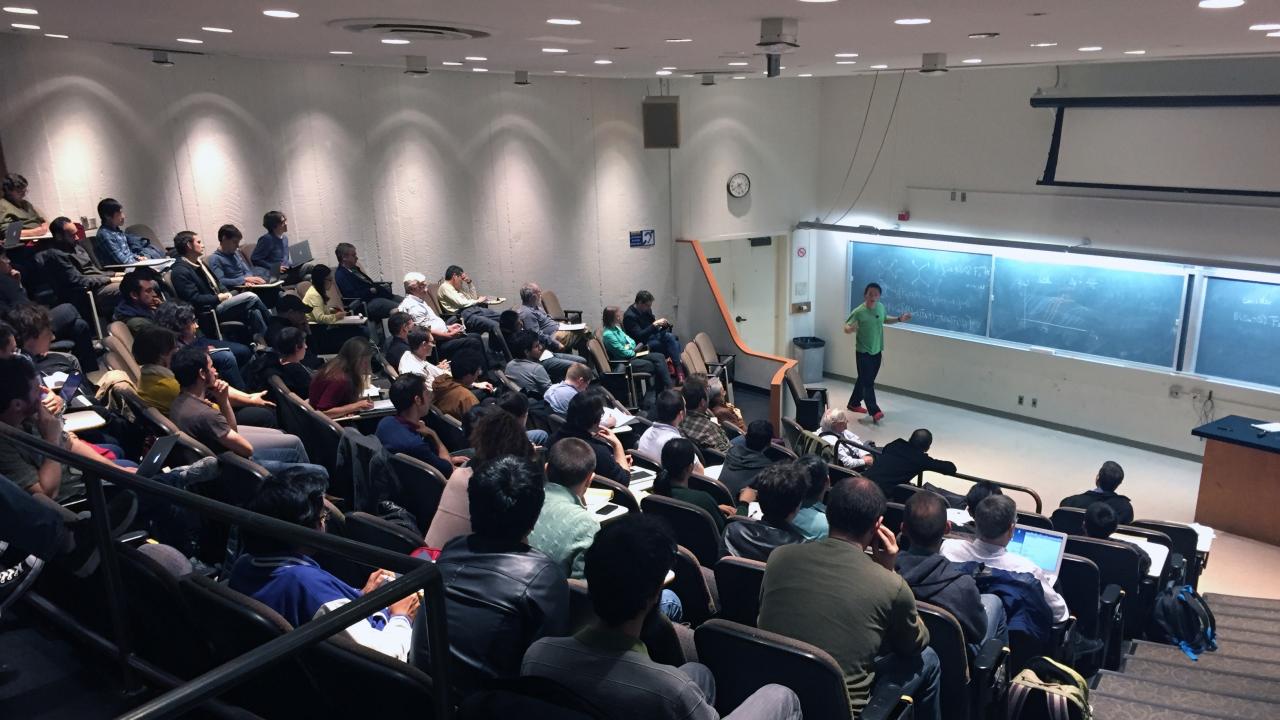
Conference Puts Quantum Mathematics and Physics Center on the Map
Researchers from around the world recently converged at UC Davis for a five-day conference exploring emerging science in quantum field theory, string theory and quantum gravity.
Organized by the Center for Quantum Mathematics and Physics (QMAP) at UC Davis, the conference brought together speakers from across the international physics and math community for talks and informal discussion about recent developments in physics.
“Many of the most exciting developments in science today take place at the boundaries between the traditional fields. QMAP occupies a unique niche amongst theory institutes, concentrating on those areas of physics and mathematics that are strongly correlated,” said Nobel laureate David Gross, a professor at the Kavli Institute for Theoretical Physics at UC Santa Barbara. “This conference, which I find to be extraordinarily exciting, is testimony to this initial success of QMAP.”
Throughout the talks, conference participants showed great enthusiasm for QMAP and an eagerness to see what lies ahead for the center. “The QMAP inaugural conference was superb,” said Leonard Susskind, director of Stanford Institute for Theoretical Physics. “I see a great potential for the center and look forward to interacting with members of the center. Davis is conveniently enough located for me to consider visiting on a regular basis.”
The excitement in the community was heartwarming to see, said Veronika Hubeny, a founding member of QMAP and professor of physics at UC Davis. “Many speakers were saying that now they have so many more reasons to visit Davis, and everyone is expecting great things to come,” Hubeny said.
Established in 2015 with five new faculty, the Center for Quantum Mathematics and Physics brings together experts from varied fields to ponder problems in quantum physics and mathematics. Apart from this core group, QMAP also has a large number of associate members from the physics and math departments. “QMAP consists of highly recognized faculty members and excellent postdocs, and produces a lot of remarkable accomplishments,” said Tadashi Takayanagi, winner of the 2015 New Horizons in Physics Prize and a professor at the Yukawa Institute for Theoretical Physics. “QMAP is becoming a rising star among US institutions.”
In addition to a visitor program, seminar series and public lectures, QMAP is also moving forward with a physical location design that is conducive to creativity and vibrant exchange of ideas. Researchers, postdocs, visitors and students will work in concert to tackle questions such as the origin of space and time, quantum gravity and string theory.
“The QMAP center is an exciting development in our field,” said Macarthur fellow Eva Silverstein, a professor at Stanford University.
The “Recent Developments in Fields, Strings and Gravity” conference was held Dec. 12–16, 2016, at UC Davis. Funding was provided by UC Davis and the Gordon and Betty Moore Foundation.
Speakers included Nima Arkani-Hamed of the Institute for Advanced Study; Sean Hartnoll, winner of the 2015 New Horizons in Physics Prize; Mark Van Raamsdonk, winner of the 2014 CAP-CRM Prize in Theoretical and Mathematical Physics; Pedro Vieria of the Perimeter Institute; and Xi Yin, winner of the 2017 New Horizons in Physics Prize.
— Becky Oskin, content strategist in the UC Davis College of Letters and Science
